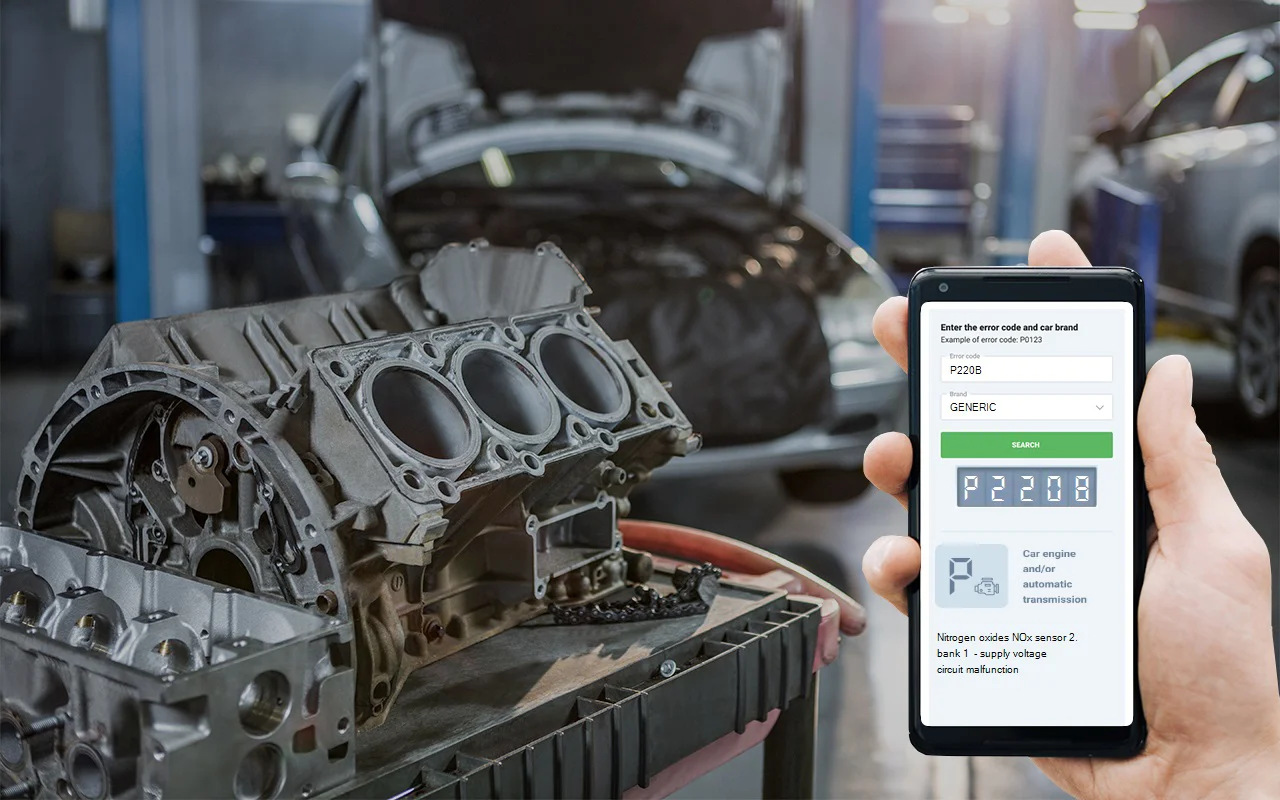P220B is one of those codes that’ll make any seasoned tech pause for a second. In my experience, it shows up when your vehicle’s computer notices something off with the supply voltage going to the downstream NOx sensor on Bank 1. For you, that means the sensor sitting after the catalytic converter, on the same side as cylinder 1. Now, this NOx sensor is vital-it keeps tabs on nitrogen oxide levels in your exhaust, which helps keep emissions legal and your engine running smooth. If the voltage feeding that sensor strays out of spec, the sensor can’t do its job, and the engine control module flags it with a P220B code. Bottom line: this is part of your emissions system, and when it’s acting up, you’re risking both performance and a failed emissions test.
DTC P220B
Causes of P220B trouble code
From my time under the hood, I can tell you p220b usually comes down to a few common troublemakers. Here’s what I see triggering this code most often, both in the shop and according to manufacturer bulletins:
- Faulty downstream NOx sensor (Bank 1, Sensor 2) - These sensors don’t last forever. Age, road grime, or even a leaky injector can foul them up.
- Wiring or connector problems in the NOx sensor’s supply voltage circuit - I can’t tell you how many times corrosion, salt, or heat has chewed up a harness.
- Open or shorted wires in the supply voltage circuit - Sometimes a wire gets pinched between a bracket, or insulation rubs through from vibration.
- Issues with the sensor’s power or ground - A weak or missing ground can cause all sorts of headaches, and it’s easy to overlook.
- Engine control module (ECM) faults-pretty rare, but I’ve seen it once or twice when everything else checked out.
Symptoms of obd code P220B
When this code’s present, the first thing you’ll usually spot is the check engine light glaring back at you. Sometimes, you’ll also get a warning about the emissions or SCR (Selective Catalytic Reduction) system. Here’s the catch: your car might drive just fine at first. Don’t be fooled. In some cases, you’ll notice reduced power, or the car might limp along if the system thinks emissions are getting out of hand. And if you’re due for a smog check or inspection, this code is a guaranteed fail.

Diagnosis with obd2 code P220B
Whenever I’m faced with a p220b, I’ve got a routine that saves time and guesswork-and you can follow the same steps. First, lift the hood and get your eyes on the wiring and connector for that downstream NOx sensor on Bank 1. Look for cracked insulation, green corrosion, or a connector that isn’t seated all the way. You’d be surprised how often the problem is staring right at you. Next, grab a multimeter and check the supply voltage at the sensor’s connector with the ignition on. Compare what you see to your vehicle’s specs. If that voltage is missing, way off, or jumping around, that’s a big clue. If things look weird, start tracing the wiring back-look for hidden breaks, poor grounds, or shorts to power. When the basics check out, I’ll either swap in a known good sensor or connect a scan tool to see if the sensor is even talking to the computer. Here’s a pro-tip from the garage: don’t skip the simple stuff. Loose or dirty connectors can make you chase your tail for hours if you overlook them.

Common Mistakes When Fixing P220B code
A classic mistake I see is folks running out and buying a new NOx sensor without first checking the wiring or the connector. That gets expensive fast. Another pitfall is forgetting to check the actual voltage at the sensor-if you skip that, you could miss a wiring issue or even a rare ECM fault. And let’s not forget about corrosion inside the connector-it can cause maddening intermittent problems that come and go. Always start with the basics, double-check your grounds, and don’t just throw parts at the problem.

Seriousness of P220B engine code
Take it from me-this isn’t a code you want to ignore. Your car might seem fine at first, but with a bad NOx sensor supply voltage, your emissions system is flying blind. That means more pollution, a failed emissions test, and possibly your car slipping into reduced-power or limp mode. Letting this slide can end up trashing expensive parts like your catalytic converter or SCR system. Trust me, it’s a lot cheaper and easier to fix the issue now than to wait for a bigger, wallet-draining problem later.
Repair Steps for dtc P220B
In my shop, repairs for this code nearly always boil down to one of a few things: patching up or replacing damaged wires or connectors in the NOx sensor circuit, cleaning off any corrosion, or swapping out the downstream NOx sensor if it’s gone bad. Only once in a blue moon is the ECM at fault, and that’s always my last suspect. After making repairs, I’ll clear the code and take the car for a test drive to make sure everything’s truly fixed and that the code doesn’t pop up again.
Conclusion
So, to wrap things up: P220B is your car’s way of telling you the voltage getting to the downstream NOx sensor on Bank 1 is out of whack, and that sensor’s key for keeping your emissions in check. Don’t let this one slide-it’ll only get worse, and cost you more, the longer you wait. Start by carefully checking the wiring and connectors, confirm the supply voltage, and only swap the sensor once you’ve ruled out everything else. That’s how I keep customers from spending more than they need to and make sure their ride’s ready for the next inspection.




